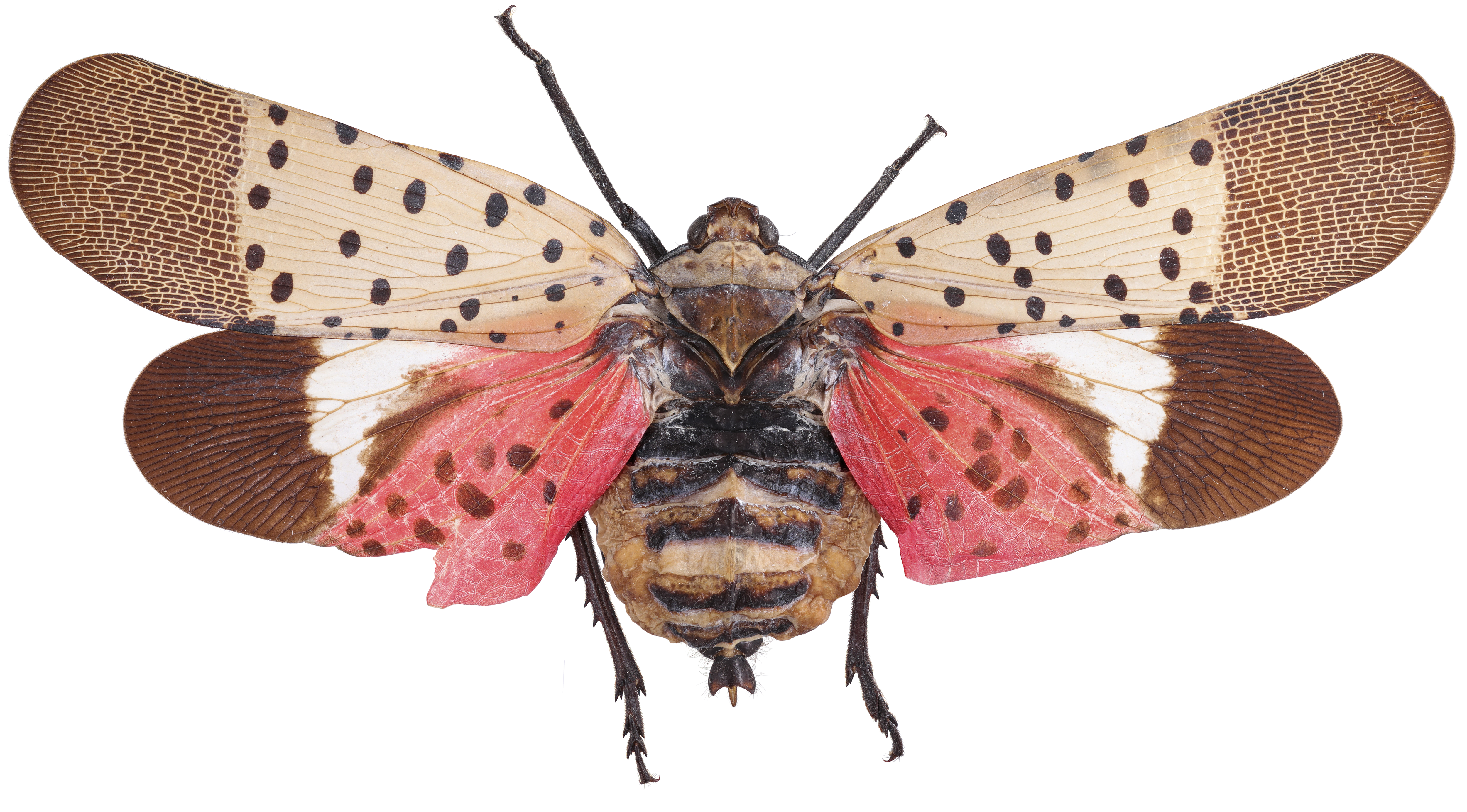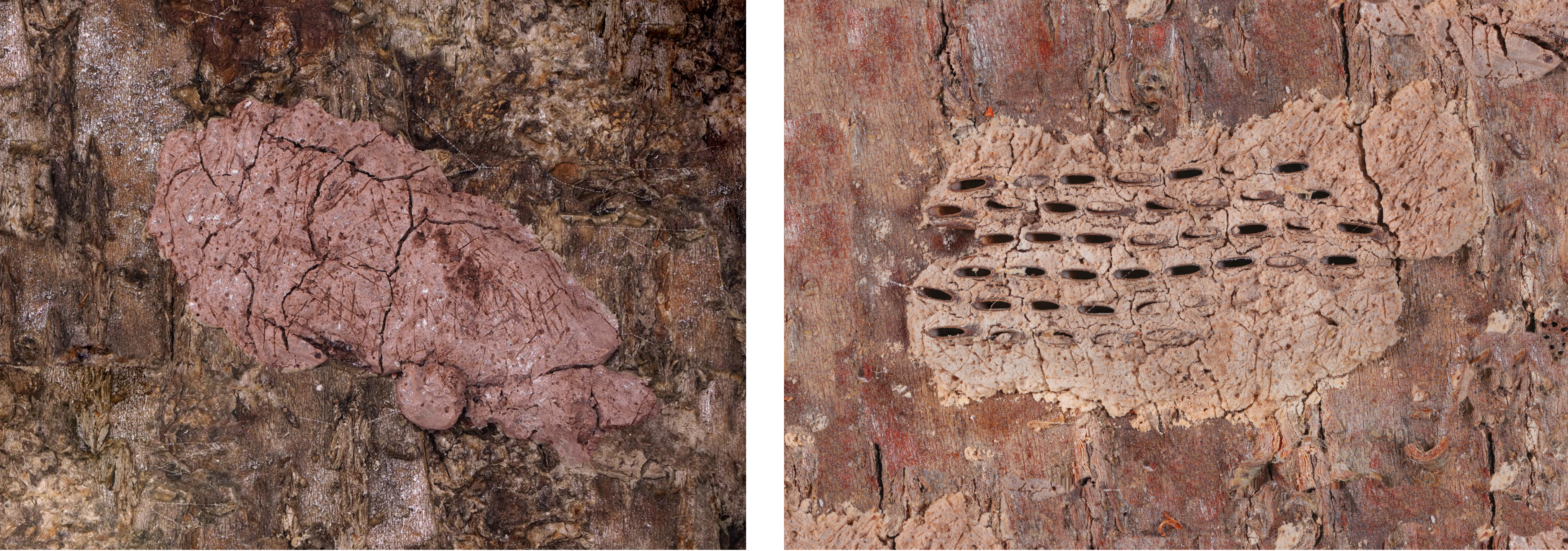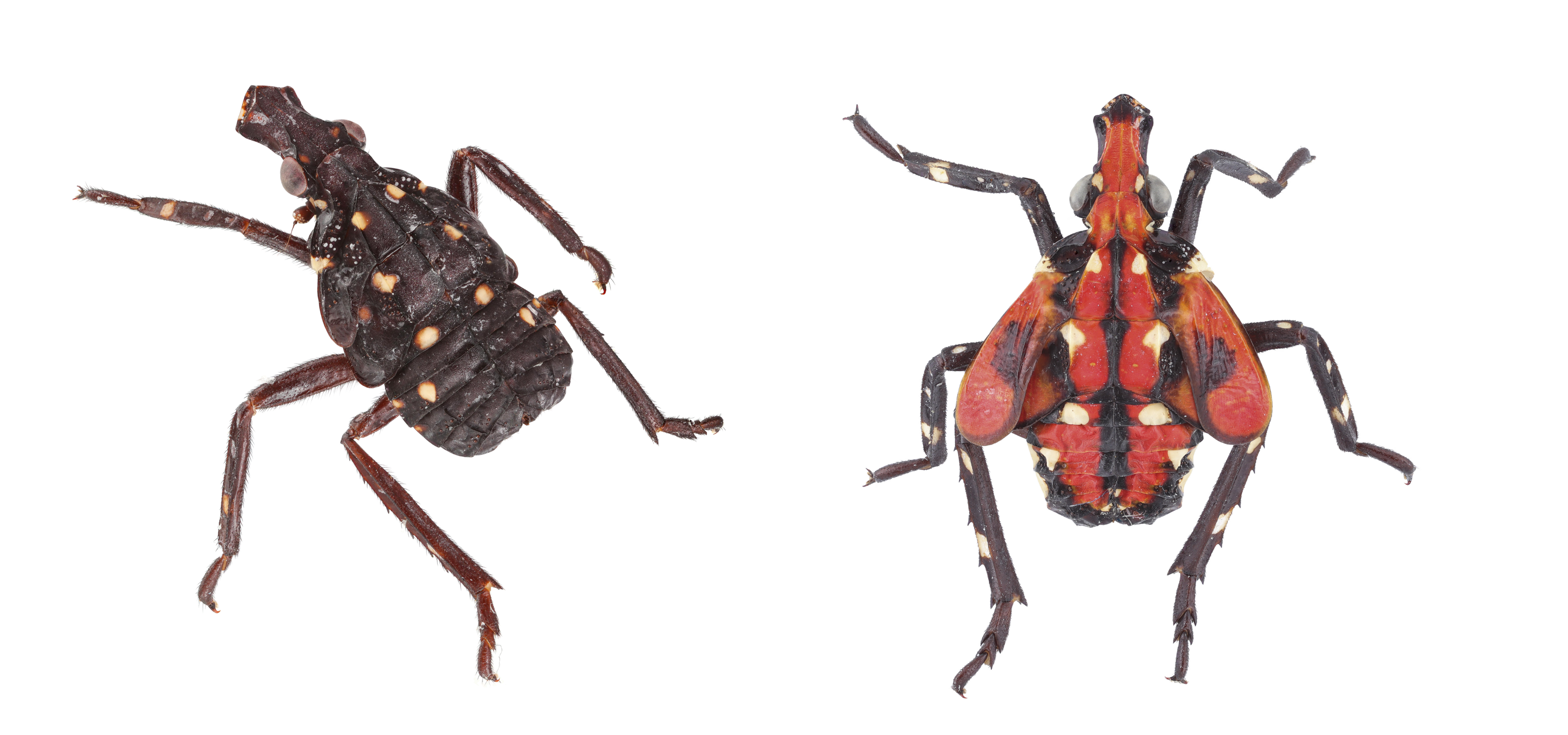Spotted Lanternfly Pest Status
Spotted lanternfly (SLF) poses a threat to tree fruit and grape production. SLF has been reported as a serious pest in its invaded and home ranges. Grapes used for wine are a high value crop in Oregon, valued at over $330 million dollars in 2022. Hops, valued at $85 million in 2022, are another Oregon crop at risk. SLF could also become a significant pest of many fruit tree crops such as apple, cherry, and peach.
While feeding, SLF generate a large amount of honeydew that can lead to sooty mold growth. High levels of feeding can cause weeping wounds on tree trunks, wilting, and possibly even death of plants.
SLF prefers tree of heaven and grape vines, but it has a broad host range of more than 70 plant species that includes apples, cherry, chestnut, hops, maple, peaches, pear, pine, plum, poplar, oak, rose, and walnut.
Adults can hitchhike on vehicles, but egg masses are likely to be the primary means of introduction. Egg masses are attached to hard, smooth surfaces, which may include vehicles, containers, and other manmade items.

Current Updates
On May 12, 2025 the Oregon Department of Agriculture (ODA) was made aware of an online report from iNaturalist sharing an image of a single early instar nymph (i.e. immature) spotted lanternfly (SLF)
Lycorma delicatula at Colonel Summers Park in Portland, Oregon. That same week the ODA, USDA Animal Plant Health and Inspection Service Plant Protection and Quarantine (USDA APHIS PPQ), and Washington State Department of Agriculture (WSDA) conducted visual surveys in Colonel Summers Park and the surrounding neighborhood. The goal of the survey was to find any sign of SLF, set monitoring traps, and conduct outreach with neighborhood residents. After two survey efforts no sign of SLF were found, thus the iNaturalist report is not confirmed.
ODA and USDA APHIS PPQ will continue to conduct visual surveys and trap the area around the park at regular intervals over the coming weeks. Until the ODA has collected a physical specimen and has it officially confirmed as SLF by USDA APHIS PPQ, SLF is not considered to be present in Oregon.
Although ODA has not documented any living populations of SLF in Oregon, agency staff have intercepted multiple dead adult SLF and a live egg mass on incoming equipment from outside of Oregon in recent years. These interceptions highlight the risk of introducing SLF into Oregon, as rail cars, trucks, other cargo, and even personal vehicles move from infested states to the West, where SLF is not known to occur. SLF poses an ecological and economic threat since it attacks a wide range of plant species. Most notable agricultural industries that would be impacted are the grapevine and nursery industries. SLF is known to exist in 18 states in the mid-western and eastern part of the United States. You may find more state specific information on SLF by visiting the
USDA-AHPIS-PPQ spotted lantern fly webpage.
ODA invites anyone that thinks they may have seen spotted lanternfly in Oregon to report images to the
Oregon Invasive Species hotline. Please include location details and clear photographs. You can also report directly to the ODA using the contact information at the bottom of this page.
Identification
Adults: About an inch long, gray with spots on wings. They generate a great amount of honeydew.
Nymphs: The younger stages are black with white spots. The last instar nymph is red and black with white spots.
Eggs: Laid in masses about an inch long. They are typically covered with a wax coating that looks like dry mud. Egg masses where eggs have hatched will have rows of elongate holes. They can be laid on any hard, smooth surface.

Spotted lanternfly egg masses: unhatched on left, hatched on right.

Spotted lanternfly nymphs: early stage on left, late stage on right (not to scale)
What to do if you think you have seen a Spotted lanternfly
Please report potential sightings to the
Oregon Invasive species hotline including a detailed description of the location and a photo. It is recommended to prioritize taking a photo and then if able, capture the SLF by approaching with a container from above.